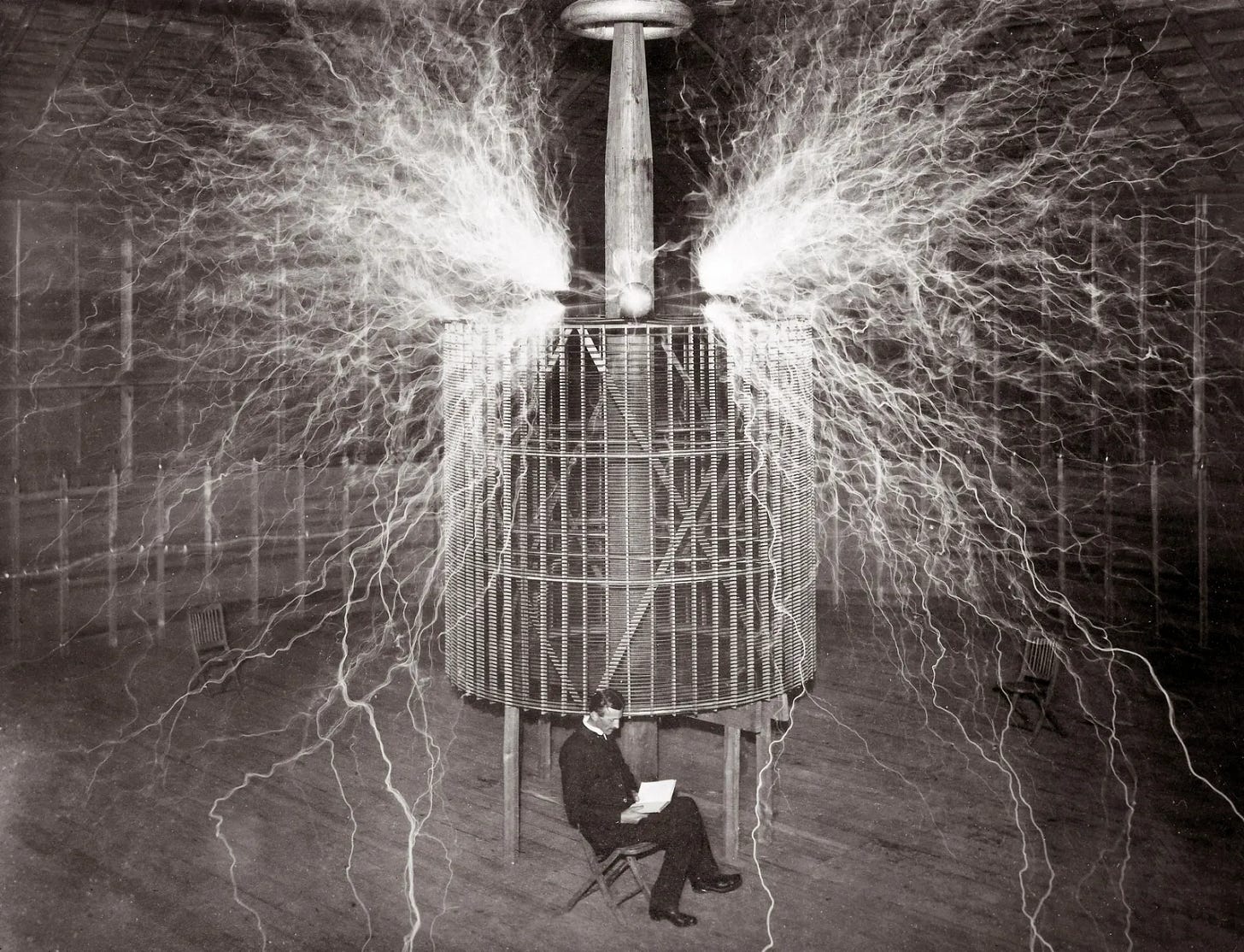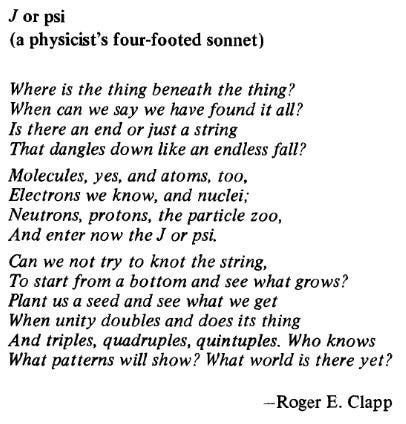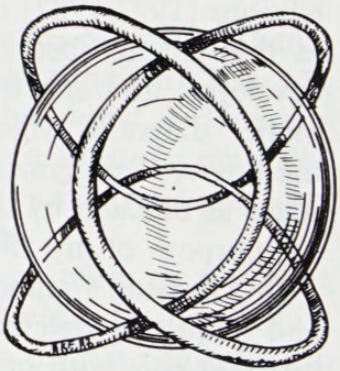Regarding Matter
A materials physics nerd philosophizes without getting too technical
Inherently born in-media-res, sometimes we take the simple things for granted, like the setting of a play. Or the the ground on which we stand.
This is particularly true for the stuff - the matter - of which we are composed.
Those inclined to philosophize about nature, not merely professionally but in the most experiential and accessible sense like a child might, have to wonder why materials behave as they do.
We trace much of our thoughts on these topics back to the likes of Lucretius, Democritus, and Leucippus - reasoning that there must be some phenomena at the root of observable phenomena, and that it had some grainy-ness to it.
At that time elements were themed primordially but roughly correspond to the phases of matter (and its absence) we recognize still: Solids (earth), Liquids (water), Gases (air), Plasmas (fire), and Fields/Void (ether). Certain metals were identified as special in some ways - and the nature of *that* nature was of great concern - how does gold know it is gold? How does lead know it is lead? This conundrum likely helped spawn the alchemical quest (externally) in subsequent centuries, hoping that we might ‘fool’ certain materials into a desirable transmutation.
Phenomena like crystals and static charge on amber fed into the larger conundrum of ‘how stuff works’ - eventually translating into crystallography and electromagnetism. It was the gem hounds of old who often discovered new elements in their process of attempting to classify symmetries and determine utility of unknown materials, and a substantial part of the periodic table is derived from these quasi-dwarven activities. Electromagnetism offered a connection between materials and light, if not a probable foundational basis for all phenomena, and the control of charge shown by electrical (and eventually ‘electronic’) devices and recognition of the electron as an independent entity began to allow us to undress the nature of atomic identity.
The issue of sub-atomic identity is one of measured properties, as we have little other information to go on. Typically these include at a minimum mass, charge, spin (measured or asserted), and a magnetic moment (which also implies underlying complexity). For the electron, these are fairly well known (barring some unrealized bad assumption or missed detail), though underlying questions remain - anomalies often cloaked by quantum weirdness and uncertainty principles. In any case we are back at the problem of the ancient atomists - what is the basis for these properties and the corresponding identity with which they are associated?
The subatomic also brought some undesired complexity - additional unstable particles were eventually observed, though not relevant to typical situations their presence requires consideration. Some things have an identity, but with a limited lifetime unlike the stable stuff which tends to compose matter. Some atomic elements are similarly unstable - facts learned from the revelations of radioactivity and eventually the primitive nuclear model (including isotopes).
Isotopes helped to explain otherwise strange average weight anomalies in an otherwise fairly well developed periodic table, as the chemists had dissolved enough crystals to more or less understand the practical side of ‘how stuff works’ - the intimate details of the nucleus and their implications were only made clear by atomic weapons and reactors relatively recently. Neutrons were a bit confusing as they were unstable on their own - like less relevant particles - but could be stabilized in the context of particular isotopes.
So, ignoring that which cannot retain its identity for long durations, what mechanisms might allow a particle to remain itself? Okay, it’s waving a bit, but what’s going on?
This is the point where our abstractions, like ‘treat everything as a little ball’ start to break down entirely. This is well recognized but often explained away without any satisfactory answer.
Geometry alone is insufficient - one still has to ask what the ‘stuff’ having some geometry consists of, in a context prior to the existence of any phase of anything. This is a general problem and also arose in the context of Victorian vortex atom proponents - they were looking at knots made of smoke or string - they were not thinking in terms of fields and topology.
We have many examples now of ephemera within the context of some substrate system. Phonons in a crystal lattice. Plasmons on an electron surface. Topological defects like those found in crystals have a similar quality (one might include holes as well), and people often describe these as ‘quasi-particles’ akin to the smoke rings which inspired Kelvin and Tait.
The question of ‘the substrate’ for fundamental stuff is what caused so much discussion about an Ether or Aether - but the properties and interactions with any such thing have been dismissed while being replaced by a seemingly effective equivalent in the electromagnetic fields within a vacuum, which is our rationale for how the light from the stars travels all the way to us (when it isn’t interrupted along the way). We have adamant objections these days about an ether, but no such concerns about the omnipresence of electromagnetism. (Can one even argue against it with awareness of the data in good faith?) Ether or no, some substrate can be supposed to carry the topological discontinuity of electromagnetic vortex knots, and should probably be EXPECTED given the replication of topological phenomena at other scales in related systems. It only makes sense to look for such things, and the best candidates are subatomic particles (which Kelvin was largely unaware of when his made his proposal - Atoms seemed fundamental then)
This ‘topology as identity’ mechanism appears ill-explored in the context of subatomic particles, despite no shortage of seemingly tangentially-related work. One imagines that with a little nudge, much more detail might be achieved, as there are open problems before even offering a proper model. (No theory is being offered here, just a vision derived from a hypothesis). The question of ‘what is the knot *made* of ?’ is sort of missing the point, but it deserves some explication if a dynamic model is to be obtained.
In this sense, a proton-trefoil topology isn’t made of anything, in the same way that a dislocation plane in a crystal isn’t exactly made of anything despite being easily identifiable and modellable.
Direct identification of stable particles using this lens has largely been accomplished piece-meal by a variety of thinkers in the past few decades in particular. It only remains to better establish these associations and their underlying mechanism - if anyone so desires to attempt such - to explicate the particle zoo.
The neutron remains a bit mysterious, but it is key to any predictive nuclear model, but to first order a figure 8 knot topology gives some insights into what might be going on. Unfortunately this picture complicates the concept of spin (or perhaps allows it to be deconvolved?).
As opposed to using little balls all the way down, deriving property from topology may provide (some details are yet to be shown explicitly) a mechanism for the identity of the subatomic things we see, which leads to the (admittedly vague) nuclear mechanisms which in turn produce the stuff that chemistry explains so well.
The implications of this are rather profound, but I prefer that others discover those details in their own meditations on the subject. Quite a few currently cherished concepts might be tuned or displaced if this vision were to become more broadly established.
Buttons just in case:





